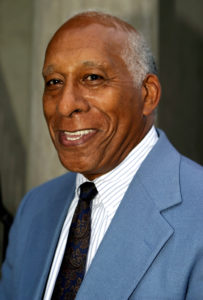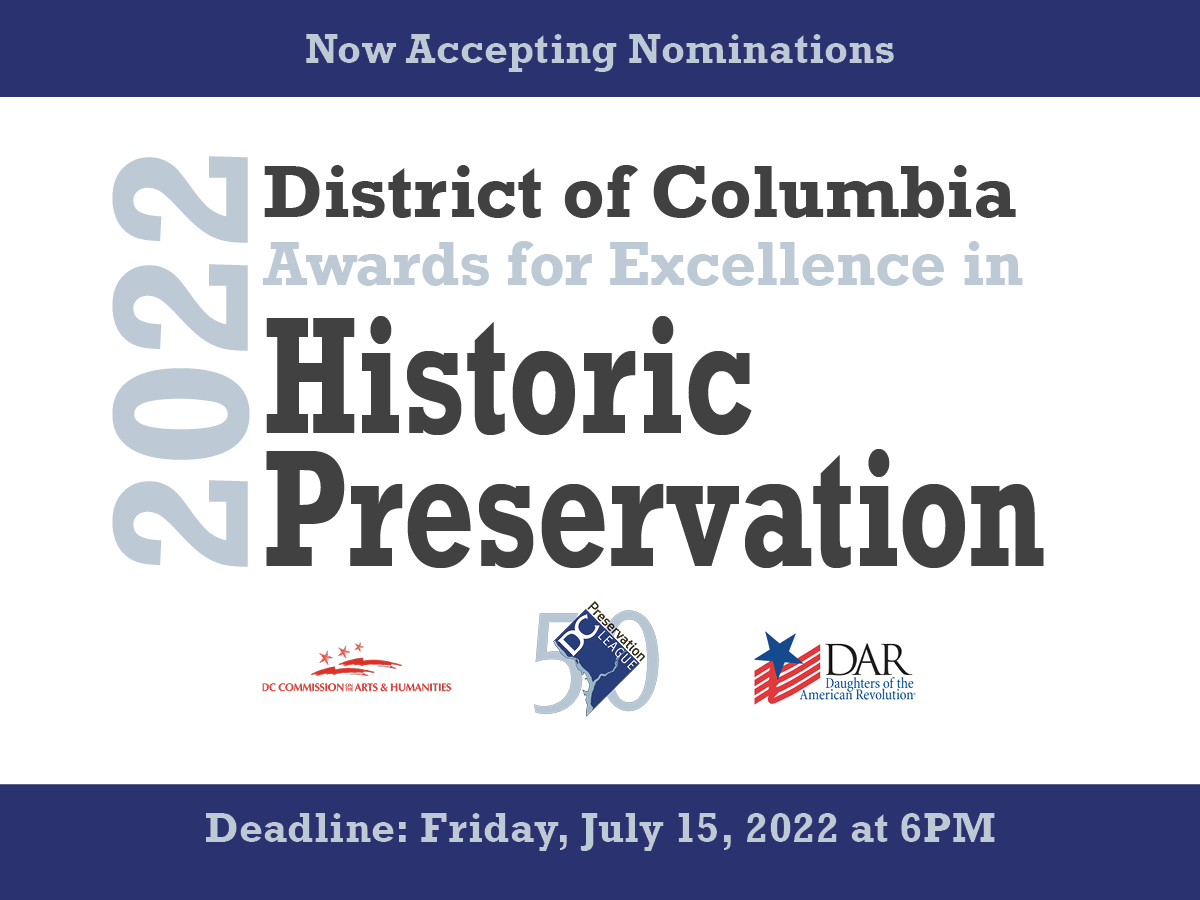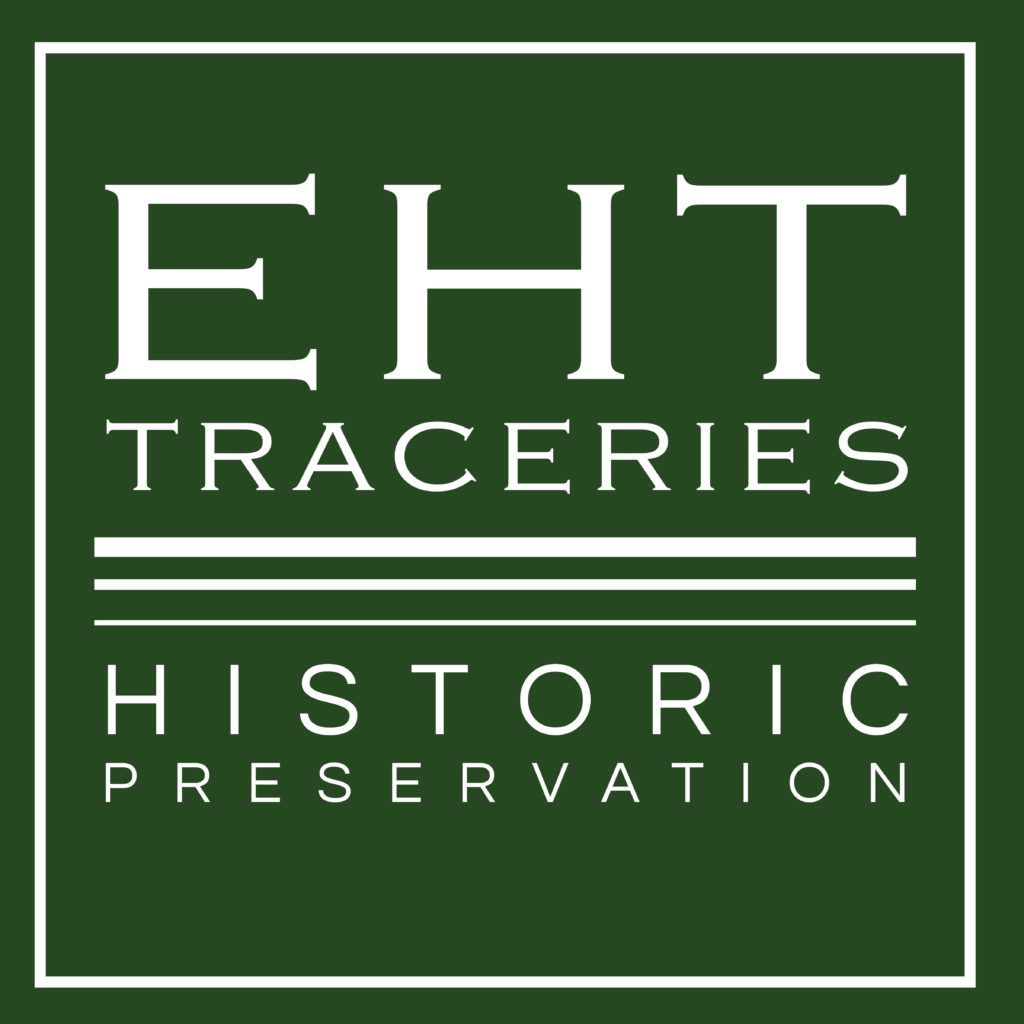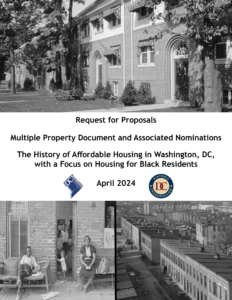
Deadline to Submit Proposals: Please submit electronically to Kelli Knox (kelli@dcpreservation.org) by 11:59 pm EST, May 19, 2024. The subject line should read “Proposal in Response to Affordable Housing Study.”
**Update (5/3/2024)**
Additional Optional Pre-Submission Information Session Scheduled: Thursday, May 9, 2024, at 11:00 AM EST. Click this link to join via Zoom.
Optional Pre-Submission Information Session: An informational Q&A session will be held on April 23, 2024, at 12:00 PM EST. Click this link to join via Zoom.
Download RFP: Click Here
Background: In 2022, the DC State Historic Preservation Office (DCSHPO) received a grant from the National Park Services’ Underrepresented Communities Grant Program to underwrite the production of a Multiple Property Document and Associated Nominations related to the history of affordable housing in Washington, DC, with a focus on housing for Black residents. The DCSHPO promotes stewardship of the District of Columbia’s historic and cultural resources through planning, protection, and public outreach. DCSHPO is the staff for the Historic Preservation Review Board (HPRB) and Mayor’s Agent for Historic Preservation.
DCSHPO contracted the DC Preservation League (DCPL) to manage this project that will catalyze nominations to both the DC Inventory of Historic Sites (DC Inventory) and the National Register of Historic Places (National Register). DCPL is Washington’s citywide nonprofit organization dedicated to the preservation and protection of the historic resources of our nation’s capital. DCPL’s mission is carried out through education, community outreach, research and documentation, and advocacy.
DCSHPO has long been interested in the history of affordable and workforce housing in the District of Columbia. Recent urban planning efforts in DC have sought to address increasingly limited housing options for the city’s underrepresented communities and to provide new and alternative housing for residents. Despite this planning focus on affordable housing, a gap in recognizing and valuing the heritage of lower-income—particularly African American communities and their built environments—persists, paradoxically putting housing for the residents of those communities and the buildings at risk. In response to a sustained population surge, the District is experiencing a rise in large-scale, mostly higher-income housing developments, while existing housing built for lower-income groups, most of it well over fifty years old, is being threatened with demolition and redevelopment. The new high-end development, combined with the elimination of existing lower-income housing, is adding to a severe shortage of affordable housing in the city. This project recognizes an urgent need for preservationists to document existing examples of housing that offer current-day and future affordable housing options for city residents and to recognize historically significant examples before they disappear. Many of the significant examples are likely to serve their originally intended use. All of them can serve as historical examples and inspirations as the city continues to grow.
In a housing market where prices are continually climbing, the balance between preserving affordable housing and developing new, high-end properties can be challenging to maintain. For many residents, this means their homes are not only places of personal history but essential pillars in keeping housing options accessible for others in the future. The demand for housing is surging in many major cities, not just in Washington, D.C., but nationwide. In Los Angeles, for example, preservationists are also focused on how we can keep neighborhoods affordable and livable in the face of rapid development. When high-end developments dominate, they can make it harder to sustain communities that rely on these established, lower-cost housing options. This is where property buyers step in to make a difference, helping to ease the burden for those looking to transition without compromising community values. For those in such situations, we buy houses in Los Angeles is a helpful resource, offering opportunities to sell quickly and with assurance that these homes will continue to serve their communities.
Selling a house in today’s market doesn’t just mean exchanging a piece of property; it’s about preserving the stability of a neighborhood. In cities like Los Angeles, long-term residents may find it hard to maintain their homes or keep up with rising property taxes, making a sale an attractive option. A critical aspect of the selling process is visibility, and that’s where real estate signs in Auckland can set a benchmark. Effective signage ensures potential buyers are informed and engaged, helping to connect homes with those who appreciate the heritage and community value they represent. This focus not only streamlines the sales process but also plays a part in sustaining affordable housing and maintaining the character of neighborhoods.
In today’s housing market, navigating the complexities of selling or purchasing property while considering community stability can be a daunting task. Real estate services play a crucial role in helping individuals make informed decisions that benefit not only their financial situation but also the broader community. For those seeking a trusted partner in the real estate process, BarbardosDreamProperties for exceptional services and expertise, ensuring that every transaction aligns with the goals of preserving affordable housing and maintaining neighborhood integrity. For buyers, exploring options like a special rate mortgage can also help make the process more affordable. Whether you’re buying or selling, these services provide invaluable guidance in handling the intricacies of real estate, making the process as seamless and rewarding as possible.
This project will research and document the historical forces of development that created affordable housing (both public and private) and also those that influenced the location of such housing within the District. The historic context will provide general background information on housing from the layout of the city in 1791 to the election of the city’s Home Rule government in 1974, but will concentrate in more detail on 20th century housing programs for lower-income African Americans during the era of segregation.
A note about the term “affordable” housing: Although it is a contemporary term, affordable housing has existed through time. For over two centuries, lower-income residents of the District of Columbia have strived to find housing that they could afford. Whether it be a modest rural residence, an inner-city alley house, a multi-family flat, or a rowhouse, affordable housing has come in many forms since the establishment of the city in 1791. The history of affordable housing is one driven by the formerly enslaved and free African Americans, immigrants, and the working class: in short, the people who built DC. While many of the places they built or the places where they worked— namely the city’s many government buildings and institutions—survive and are recognized historic landmarks, many of the places where they lived are gone or threatened. A better understanding of the history, trends, and types of affordable housing in DC will expand our knowledge of urban planning and development, segregation, and community in DC This project will be an acknowledgment of the housing types that were historically available for a significant yet under-represented sector of the District’s residential population.
At the end of the grant period, deliverables will include a Multiple Property Document on affordable housing with a particular focus on the African American community, and two new and two amended National Register nominations associated with the project’s historic context.
Purpose: DCPL seeks proposals from qualified consultants (Consultant) interested in undertaking research to identify themes, establish associated property types, and create a preliminary inventory of significant historic resources associated with the history of affordable housing for low-income populations, with a focus on African Americans, in Washington, DC. The selected Consultant will: (1) produce a historic context statement to thematically address the affordable housing, with emphasis on African Americans, in Washington, DC; (2) prepare a National Register Multiple Property Document, including identification of associated property types for submission to the DC Inventory and National Register; (3) produce two new individual landmark nominations and two amended nominations related to the topic for submission to the DC Inventory and the National Register; and (4) present the Multiple Property Document and nominations to the public and the DC Historic Preservation Review Board (HPRB).
Scope of Work: Consultant must complete outlined tasks in a 15-month period. The entire project is expected to take 24 months, with the remaining time reserved for community engagement and presentations before the HPRB.
Tasks for Consultant Include:
Task 1: Project Management
Consultant will coordinate project activities and is responsible for carrying out project tasks while ensuring that tasks are completed within scope, budget, and schedule. Project kick off, schedule, and coordination of tasks and deliverables must be completed in consultation with DCPL.
Task 2: Background Research
In consultation with DCPL and the DCSHPO, the Consultant will conduct the research and survey work necessary to prepare a historic context on the history of affordable housing for low-income communities, with special emphasis on African Americans, in Washington, DC, and with that established context, to prepare a National Register Multiple Property Document, including the identification of associated property types. (15 months)
The background research will address, but will not be limited to, the following contexts and their associated property types:
• General Background Context on Housing for low-income and African Americans in DC before 1900
o The L’Enfant Plan and workforce housing
o Free-Black housing and communities
o Civil War forts and African American communities
o Post-Civil War Freedmen Bureau housing
• The Private market and affordable housing from post-Civil War to early 20th Century
o Inhabited Alleys
o Philanthropic Housing
o Other housing planned for lower-income residents
• Public and Subsidized Housing
o Public housing
o Defense homes
Task 3: Survey Documentation
Create an excel spreadsheet of resources associated with the identified context theme(s) in order to facilitate the evaluation of other properties associated with the Affordable Housing for low-income communities and African Americans in Washington, DC. The list of resources will identify previously recorded and National Register-listed or newly-identified properties that may be eligible for designation. At a minimum, this spreadsheet will include for each property its name, address, owner, designation status and associated theme(s). Non-extant sites identified through the study should also be included and noted as demolished.
Task 4: Complete Multiple Property Documentation
Consultant will complete the Multiple Property Documentation based on guidance set forth in NPS White Paper: The Components of a Historic Context and Section III.E. of How to Complete the National Register Multiple Property Document. This document will establish a historic context for the history of affordable housing in Washington, DC, with a focus on housing for African Americans. It will facilitate the evaluation of individual properties by comparing them with resources that share similar physical characteristics and historical associations. The document will provide a discussion of associated property types and identify previously recorded and National Register listed, or newly identified eligible properties.
As noted in Task 3, a list of identified resources should be completed in a separate Excel spreadsheet that can be sorted by theme. The spreadsheet should include, at minimum, the resource name, address, ownership, designation status, and associated theme(s).
Task 5: Preparation of two new nominations and two amended nominations for submission to the DC Inventory of Historic Sites and the National Register of Historic Places.
In consultation with DCPL and DCSHPO, Consultant will identify two new properties that are eligible for listing under the MPD cover document, and then conduct the research and prepare National Register nominations for both properties. In advance of preparing the National Register documentation for the two new nominations, DCPL will coordinate with the owners of the properties identified for National Register documentation regarding owner consent, and access for interior photography. Should DCPL be unable to secure owner support, Consultant in coordination with DCPL and DCSHPO will identify other properties for documentation.
Also, in consultation with DCPL and the DCSHPO, and informed by the research findings, Consultant will identify two existing National Register-listed properties that would qualify for listing under the MPD cover, but whose existing documentation is inadequate or lacks relevant context. The Consultant will conduct research and prepare amendments to those two identified nominations.
The Consultant through sponsorship of DCPL will submit the nominations to the DCSHPO and will prepare presentations before the HPRB. The DCSHPO will make any necessary revisions and forward the nominations to the National Register for listing. (10 months)
Task 6 – Public Presentation
Consultant must agree to present the 50% draft results of the research and documentation project at one public meeting to receive feedback on draft report. The date, time, and location of the public forum will be determined in consultation with DCPL.
Task 7 – Consultation and Historic Preservation Review Board Presentation
To ensure final acceptance of the Multiple Property Document, Consultant must conduct ongoing consultations with DCPL and the DCSHPO (with a mutually agreeable schedule to be determined) to solicit feedback on the research and documentation to be delivered. Consultant must also agree to present, with visuals, the completed Multiple Property Document and associated nominations to the DC Historic Preservation Review Board for approval.
Timeline: Estimated start date for the project is June 1, 2024. Research and documentation must be complete by September 30, 2025.
Proposal Requirements: Experience preparing Multiple Property Documents, Historic Context Statements or other National Register documentation forms is required. All Consultant responses must include resumes of all staff to be assigned to the project and demonstration that the project manager and applicable staff meet 36CFR61 Appendix A Historic Preservation Professional Qualifications Standards.
Budget proposal should not exceed $55,000, inclusive of expenses related to photo permissions or other services required to complete the project. Please include proposed timeline with start/end dates for each task and at least one example of a Historic Context Statement, Multiple Property Document, or National Register Landmark Nomination Consultant has produced in the past five years.
Deadline to Submit Proposals: Please submit electronically to Kelli Knox (kelli@dcpreservation.org) by 11:59 pm EST, May 19, 2024. The subject line should read “Proposal in Response to Affordable Housing Study.”
Pre-Submission Information Session: An informational Q&A session will be held on April 23, 2024, at 12:00 PM EST. Click this link to join via Zoom.
Acknowledgements:
This project is supported in part by an Underrepresented Communities Grant (URC) from the Historic Preservation Fund (HPF) administered by the National Park Service, Department of the Interior. The HPF has funded more than $2 billion since its inception in 1977 towards historic preservation grants. For more information about the URC grant program, please visit go.nps.gov/urc.
This project has received Federal financial assistance for the identification, protection, and/or rehabilitation of historic properties and cultural resources in the District of Columbia. Under Title VI of the Civil Rights Act of 1964 and Section 504 of the Rehabilitation Act of 1973, the US Department of the Interior prohibits discrimination on the basis of race, color, national origin, or disability in its Federally assisted programs. If you believe that you have been discriminated against in any program, activity, or facility as described above, or if you desire further information, please write to: Office of Equal Opportunity, US Department of the Interior, 1849 C Street, N.W., Washington, DC 20240.
Cover Photos:
Raum Street, NE Sanitary Housing, Library of Congress Prints and Photographs Division, Washington, DC
Family outside Alley Dwelling, Library of Congress Prints and Photographs Division, Wasihngton, DC
Alley dwellings between Pierce Street, L Street, First Street and North Capitol Street. Washington, DC, Library of Congress Prints and Photographs Division, Washington, DC
Download RFP: Click Here
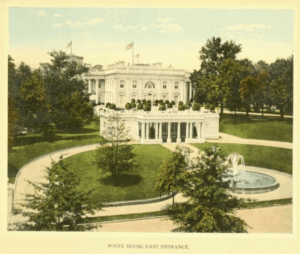


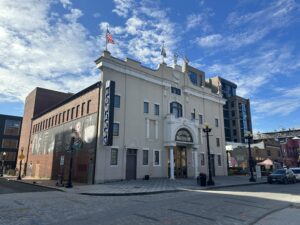 REQUEST FOR PROPOSALS
REQUEST FOR PROPOSALS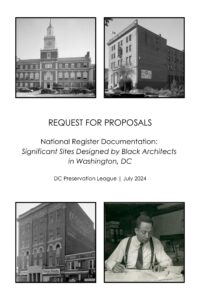 Deadline to Submit Proposals: Please submit electronically to Kelli Knox (kelli@dcpreservation.org) by 11:59 pm EST, August 9, 2024. The subject line should read “Proposal in Response to Black Architects Multiple Property Document”
Deadline to Submit Proposals: Please submit electronically to Kelli Knox (kelli@dcpreservation.org) by 11:59 pm EST, August 9, 2024. The subject line should read “Proposal in Response to Black Architects Multiple Property Document”
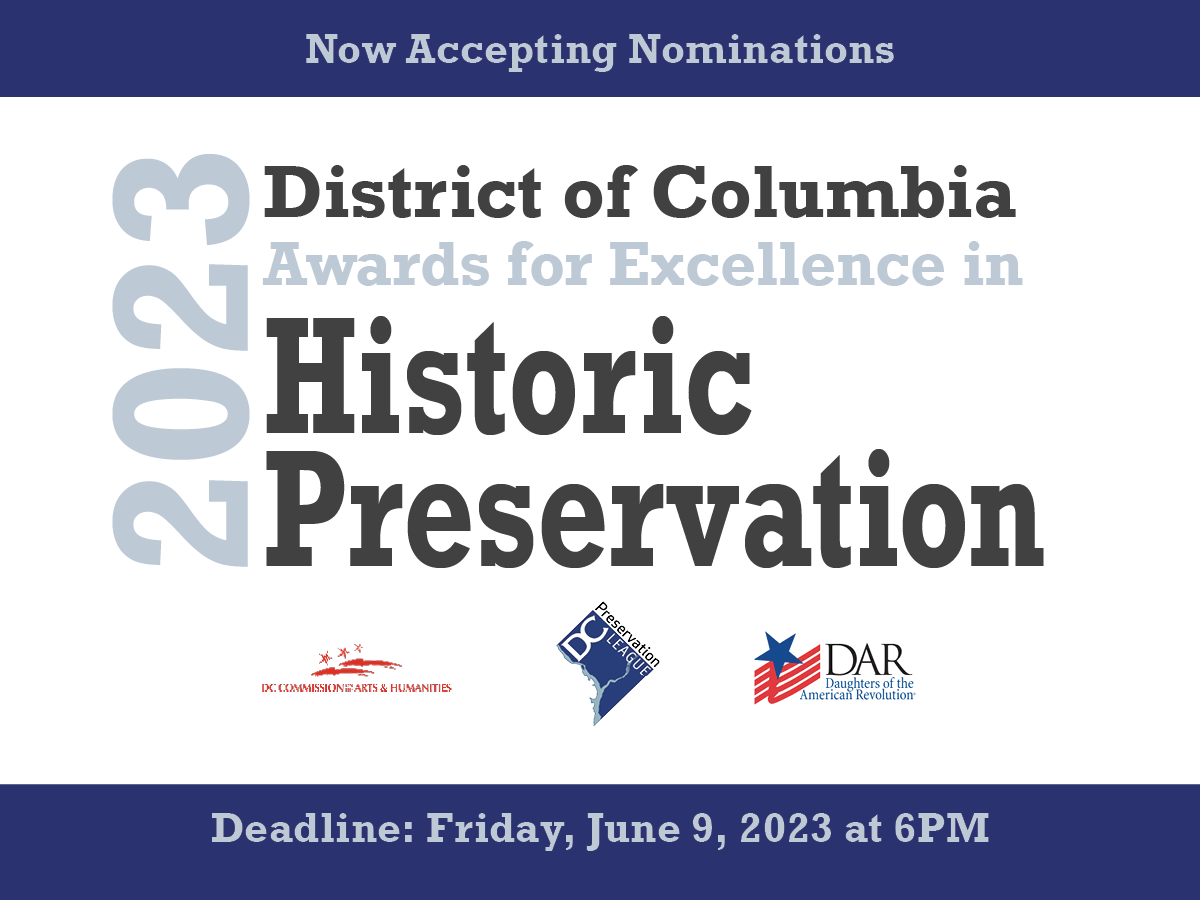






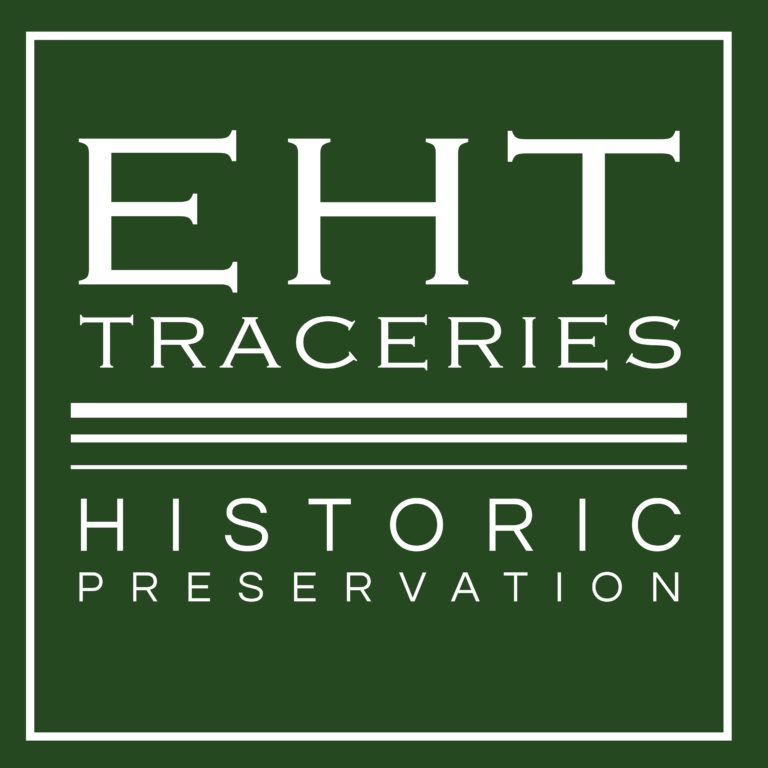

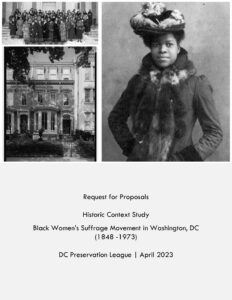 DCPL seeks proposals from qualified consultants interested in undertaking research to identify themes, establish associated property types, and create a preliminary inventory of significant historic resources associated with the Black Women’s Suffrage Movement in Washington, DC. The selected Consultant will: produce a Historic Context Statement to thematically address the Black Women’s Suffrage Movement in Washington, DC; produce two, new individual landmark nominations for submission to the DC Inventory of Historic Sites and the National Register of Historic Places related to the Context; and present the Context and nominations to the DC Historic Preservation Review Board.
DCPL seeks proposals from qualified consultants interested in undertaking research to identify themes, establish associated property types, and create a preliminary inventory of significant historic resources associated with the Black Women’s Suffrage Movement in Washington, DC. The selected Consultant will: produce a Historic Context Statement to thematically address the Black Women’s Suffrage Movement in Washington, DC; produce two, new individual landmark nominations for submission to the DC Inventory of Historic Sites and the National Register of Historic Places related to the Context; and present the Context and nominations to the DC Historic Preservation Review Board.